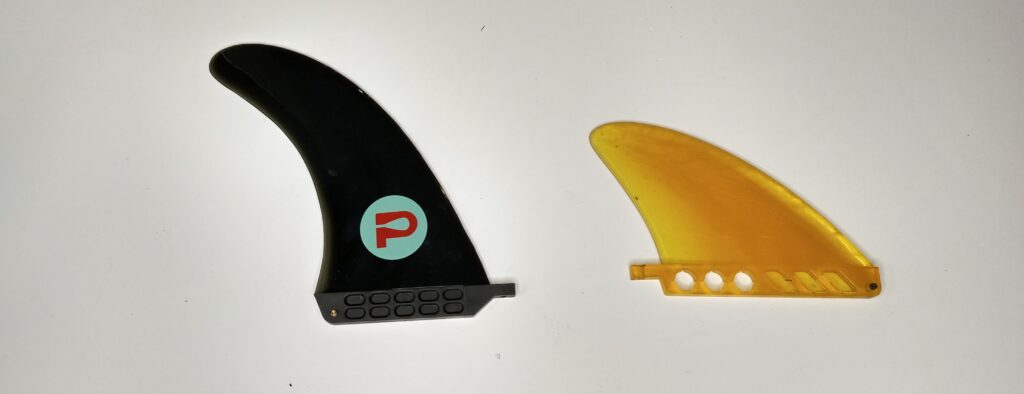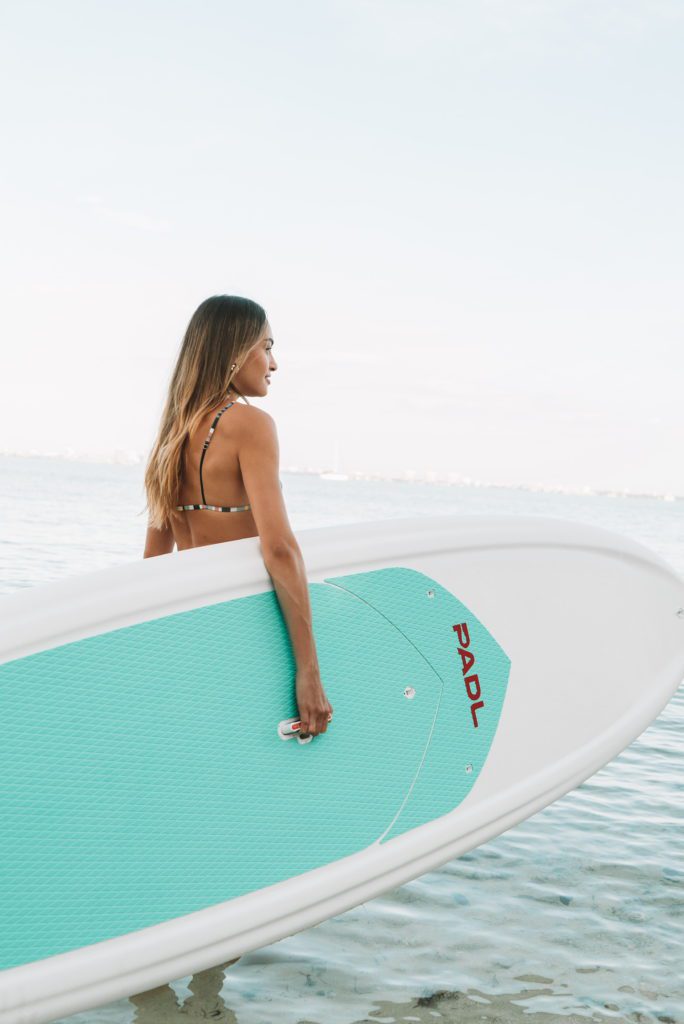HOW THE FIN ON YOUR PADDLE BOARD RENTAL MAKES A DIFFERENCE
As we introduce PADL Fin 2.0 to all the paddle boards in our stations, we take a look at the reasons why we chose a fin setup that appeals to the intermediate and advanced rider while still making beginners feel at home on the water.
When it comes to paddle board rental, the fin you are using can make a massive difference. That’s why here at PADL we put a lot of thought into what fin shape and size we use on our paddle boards, what position we place the fin at on the tail of the paddle board and what materials we use to manufacture our fins. The PADL Fin 2.0 is currently rolling out across all of our paddle board rental fleet replacing version the smaller first-generation fins that we have been using since we launched our first self-service paddle board rental station in Key Biscayne. Let’s explore the process we went through as we chose the materials, shape and size of this upgraded fin – and describe the benefits it gives to our paddle board riders across our network of stations.
Paddle Board Fin Factors – Here’s what matters
When choosing a fin for a paddle board, you have to carefully consider several factors in the decision. How and what you choose is based on how you ride. Speed kings need a certain shape and size fin to optimally cut through the water at a fast clip, distance hounds need hyper-directional fin set ups that ensure they can travel in a straight line for miles and paddle board surfers need enough flex in their fins to ride waves effectively.
The fin factors as we like to call them here at PADL are cant, flex, drag and placement.
The cant of a paddle board fin refers to its angle relative to the bottom of the paddle board. Typically, the center fin of your typical three fin surfboard will form a 90° angle in that it will stick straight up when the board is turned upside down to rest on its deck. Such a fin is said to have no cant and is great for picking up speed and paddling in a straight line. The canted fins that often are placed on either side of the center fin on surf boards angle outwards toward the rails of the board and make it easier for the board to change directions quickly when riding waves. However, these canted fins slow riders down because they create drag.
When you talk of the flex of a paddle board fin you are discussing how easy it is to bend the fin when holding it with two hands. Really rigid fins are usually made of super hard plastic and are great for stability because the hold the rider in place better on still water. When there is movement however a less forgiving fin with more flex makes it easier for more experienced riders to “move with the water” by responding to waves, chop and boat wakes.
The third factor we consider here at PADL is the drag that the fin creates as it moves through the water. Drag is a frictional force that slows down a body in motion as it moves forward. Fins with large surface areas create more drag that those with smaller surface areas and can significantly slow down the board. In some styles of surfing a slower board could be an advantage, but typically a paddle board rider will want to go faster.
Finally, placement, where the fin is placed relative to the tail of the board makes a difference. Placing the fin closer to the tail of the board allows riders to track in a straight line better. Moving the fin towards the nose of the board allows riders to execute tighter turns better, but may mean that each stroke of the paddle on one side turns the board to the opposite side. Therefore, riders with forward-placed fins will have to switch their paddles more often.
The First Generation PADL Fin v PADL fin 2.0

The iconic “Yellow Devil” fins that adored our first four paddle board rentals in Key Biscayne, FL when we launched our offering in 2019 was a single center fin rig, 4” inch long and 6” at the base, made with a very flexible rubber-like plastic and placed in the forward most position. It was optimized for beginners paddling off the coast from our paddle board rental station in Key Biscayne: riders who needed the ability to respond to waves, needed ease of turning and who were not particularly looking to cover a long distance at a fast clip.
The PADL fin 2.0 is also a single fin set up but any similarity with the 1G “Yellow Devil” ends there. The new version paddle board fin is 8” long and 5” wide at the base, made with a medium-flex plastic to give riders both responsiveness and flatwater stability, set back further toward the tail for better tracking while still allowing riders to execute a buoy turn should they ever “need” to.
The new fin dimensions and rig reflect a new type of PADL rider that is slightly less beginner-based and more like an intermediate who wants to explore and try new things on their paddle board.
“As our average rider becomes more advanced,” says PADL CPO Khalil Khouri, “we want to be able to provide a rig that allows them to take full advantage of being on a paddle board. At the same time, we don’t want to leave any beginners behind. The PADL Fin 2.0 maintains paddle board rideability for beginners while giving intermediate and advanced riders more options.”
Want to try out PADLs new paddle board fins? Just download the app, rent, ride and return. We even provide a membership option for you to paddle for less than a dollar a day! Whether you are a more advanced paddle boarder or a complete beginner, download the app today and check out the PADL stations near you. Looking to head out paddleboarding in a group? Check out our local paddle board Meetups for events, lessons and tours.



